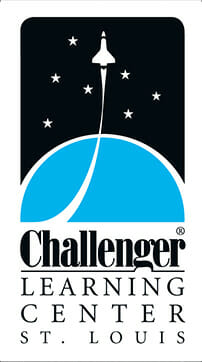For the Challenger Learning Center-St. Louis, March has been a big month for summer camp fairs. As we tell parents about camp options, our spiel usually goes something like this:
“For the younger kids, we have Astronaut Training Camps, where campers complete simulated space missions, design space suits and lunar colonies, and do all sorts of fun stuff. Older campers can make and take home one of these under-water robots…. Campers do the soldering themselves, and even scuba dive!”
Sometimes we get responses like, “Wow. This is SO my daughter. She would love this.”
But sometimes we get responses like, “Oh, I bet boys really like this camp.”
Well…
Yes, boys do really like our camps (what’s not to like?) but so do girls! What’s more, our camps aren’t just for girls who are “all science, all the time” — and in that, we have a lot in common with NASA. So, in honor of March being Women’s History Month, we continue celebrating the 30th anniversary of the founding of the original Challenger Center by highlighting a few STEM-loving females who helped “pull us into the future”.
Margaret Hamilton

Margaret Hamilton, standing next to the code she wrote for the Apollo on-board software. Image credit: NASA.
Margaret Hamilton was a founding mother of software engineering — a term she herself first coined. Hamilton started work as a programmer at MIT in 1960, but only planned to stay three years so she could support her husband while he was in law school. (After that she hoped to pursue her own graduate degree in mathematics.) Then MIT got involved in helping NASA program computers for the Apollo program, and she stayed put. In 1965, she was put in charge of programming the on-board Apollo computers.
As a working mother in the 1960s, she faced scrutiny for not staying home with her young daughter; as a woman in an all-male lab, she had to deal with a “boys’ club” culture (think Mad Men). But she found the work fascinating, and didn’t mind being “one of the guys” — even if for her, that also meant bringing her daughter in to work with her on Saturdays. More of Maraget Hamilton’s story and accomplishments are told in the WIRED article found here.
Judith Resnik

Judith Resnik,the second woman in space. Image credit: NASA.
Judith Resnik accomplished much to be proud of before her life was cut short by the Challenger disaster. Resnik was the daughter of first-generation Russian Jewish parents. Growing up, she took Hebrew lessons, became an accomplished pianist, and earned a perfect SAT score. She became an electrical engineer and was working on her doctorate when she decided (without previous interest in space) to apply for the NASA astronaut training program.
In 1978, Resnik became one of the first six women accepted into the program; in 1984, as a crew member on the space shuttle Discovery’s maiden voyage, she became the first Jewish person and second American woman in space. More about Judith Resnik can be found here.
Mae Jemison

Dr. Mae Jemison, the first African American woman in space. Image credit: NASA.
Mae Jemison is a real renaissance woman, reminding us that a love of science, technology, engineering, and math does not exclude other passions. As a child, Mae Jemison knew she wanted to be a scientist, and always expected to go to space. (She grew up watching the Apollo program, and expected space travel would be common by the time she grew up.) While earning her undergraduate degree in chemical engineering, Mae Jemison also pursued dance and theatre, and was head of Stanford’s Black Student Union.
After graduation, Jemison went to medical school and spent time in Cuba, Kenya, and Thailand. As a medical doctor she served in the Peace Corps in Sierra Leone and Liberia… but Jemison had an itch for travel that even these far-flung places could not satisfy, and she went on to apply for NASA’s astronaut training program. When she became the first African American female woman in space in 1992, she brought along objects that represented groups who hadn’t been represented in space. Jemison continues to advocate for science literacy and inclusion. You can watch Mae Jemison tell more of her own story below:
Space for All
Mae Jemison had a fascination with space from an early age; Judith Resnik only became interested as an adult; Margaret Hamilton had the Space Race show up at her doorstep; none of them pursued the aerospace industry as a first career. These women remind us that, while we love to have die-hard space enthusiasts fulfilling lifelong dreams, a successful space program also depends on taking advantage of the skills and talents of all sorts of capable people.
Although women are still underrepresented in many STEM fields, the women that are in the field have been critical to our success thus far, and the role of women will continue to grow. The HI-SEAS mission, in which six scientists are simulating a year of living on Mars, includes a crew of three men and three women (including a female commander). You can learn more about this simulated future by reading the crew biographies or watching this video summary of HI-SEAS.
What we learn from scientists past and present is that, if we force students into one box — based on their gender or any other factor — we may lose the next generation of space pioneers. This summer, we hope to see campers (of all genders) who are space aficionados, but we also hope to see campers who are dancers, babysitters, gamers, and readers… because they too could be responsible for getting us to Mars and beyond!
You can find out more about our camps — including how to sign up — here.
